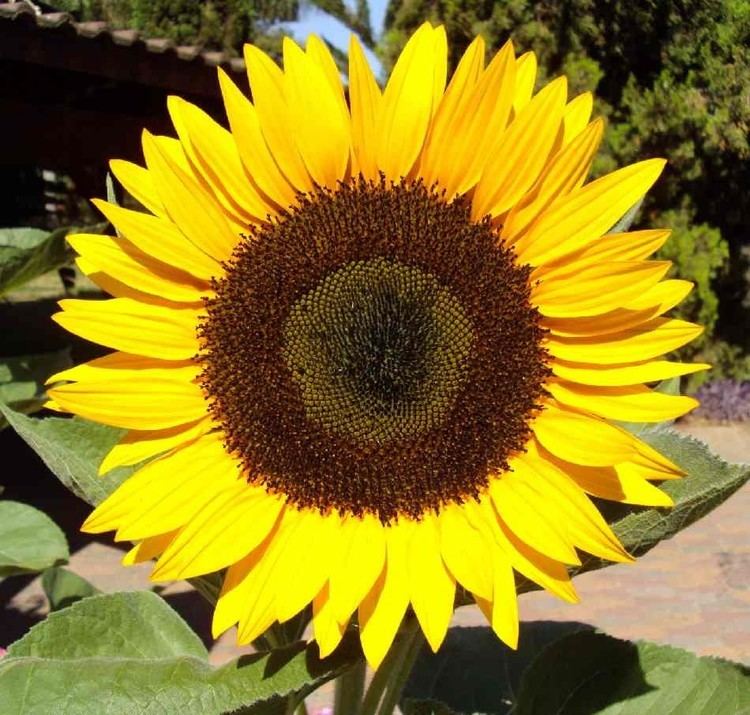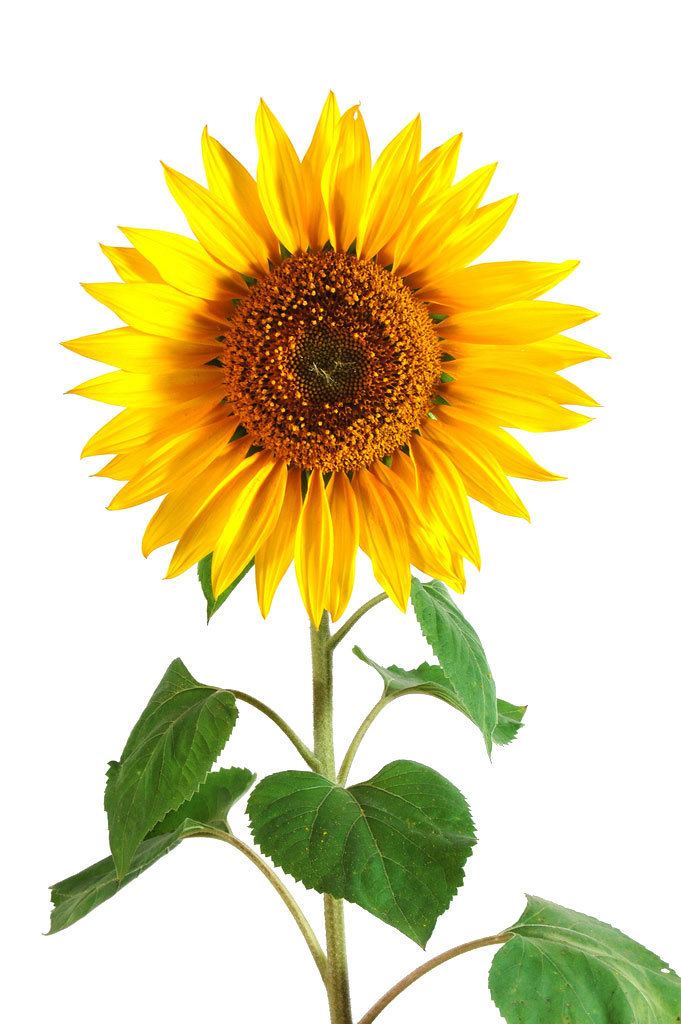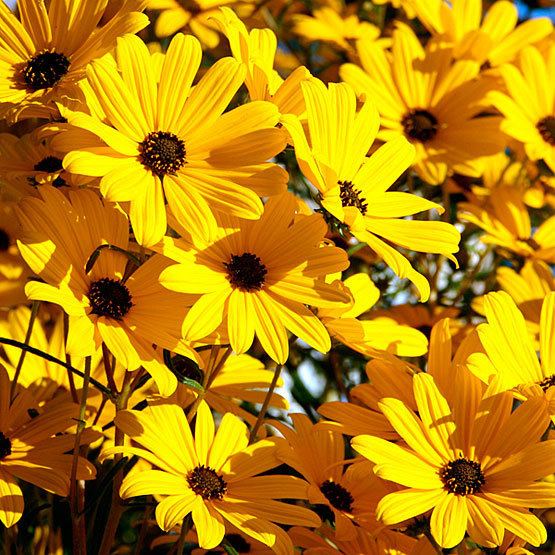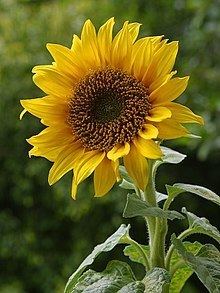Scientific name Helianthus Rank Genus | Higher classification Heliantheae | |
 | ||
Lower classifications Common sunflower, Jerusalem artichoke, Pale‑leaved sunflower, Helianthus maximiliani, Perennial sunflower | ||
Helianthus or sunflowers plant
Helianthus or sunflowers (from the Greek: ήλιος, Hēlios, "sun" and ανθός, anthos, "flower") L. /ˌhiːliˈænθəs/ is a genus of plants comprising about 70 species in the family Asteraceae. The genus is one of many in the Asteraceae that are known as sunflowers. Except for three species in South America, all Helianthus species are native to North America. The common name, "sunflower", typically refers to the popular annual species Helianthus annuus, or the common sunflower, whose round flower heads in combination with the ligules look like the sun. This and other species, notably Jerusalem artichoke (H. tuberosus), are cultivated in temperate regions as food crops and ornamental plants. The largest sunflower field is located in Tuscany, Italy.
Contents
- Helianthus or sunflowers plant
- Minnesota native plant maximilian sunflower helianthus maximiliani
- Description
- Diversity
- References

The domesticated sunflower, H. annuus, is the most familiar species. Perennial sunflower species are not as popular for gardens due to their tendency to spread rapidly and become invasive. Whorled sunflowers, H. verticillatus, were listed as an endangered species in 2014 when the U.S. Fish and Wildlife Service issued a final rule protecting it under the Endangered Species Act. The primary threats are industrial forestry and pine plantations in Alabama, Georgia, and Tennessee. They grow to 1.8 m (6 ft) and are primarily found in woodlands, adjacent to creeks and moist, prairie-like areas.

Minnesota native plant maximilian sunflower helianthus maximiliani
Description

Sunflowers are usually tall annual or perennial plants that grow to a height of 300 centimetres (120 in) or more. They bear one or more wide, terminal capitula (flower heads), with bright yellow ray florets at the outside and yellow or maroon (also known as a brown/red) disc florets inside. Several ornamental cultivars of Helianthus annuus have red-colored ray florets; all of them stem from a single original mutant. During growth, sunflowers tilt during the day to face the sun, but stop once they begin blooming. This tracking of the sun in young sunflower heads is called heliotropism. By the time they are mature, sunflowers generally face east. The rough and hairy stem is branched in the upper part in wild plants but is usually unbranched in domesticated cultivars. The petiolate leaves are dentate and often sticky. The lower leaves are opposite, ovate or often heart-shaped.

They are distinguished technically by the fact that the ray florets (when present) are sterile, and by the presence on the disk flowers of a pappus that is of two awn-like scales that are caducous (that is, easily detached and falling at maturity). Some species also have additional shorter scales in the pappus, and there is one species that lacks a pappus entirely. Another technical feature that distinguishes the genus more reliably, but requires a microscope to see, is the presence of a prominent, multicellular appendage at the apex of the style. Sunflowers are especially well known for their symmetry based on Fibonacci numbers and the Golden angle.

There is quite a bit of variability among the perennial species that make up the bulk of the species in the genus. Some have most or all of the large leaves in a rosette at the base of the plant and produce a flowering stem that has leaves that are reduced in size. Most of the perennials have disk flowers that are entirely yellow, but a few have disk flowers with reddish lobes. One species, H. radula, lacks ray flowers altogether.
Helianthus species are used as food plants by the larvae of many lepidopterans.
Diversity


